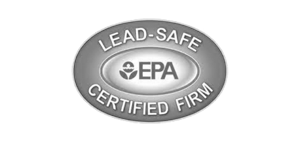Imagine this… you’ve just installed brand new floors. Maybe you’re getting ready to sell your house, or you just bought a new one. And then disaster strikes! The news reports a “100 Year Flood” in your region and your new flooring is ruined, and the house needs to be gutted. What do you do? Well, if you don’t have flood insurance, not much! Just one inch of water can be devastating and cause $25,000 in damage to your home. Many insurance companies don’t offer flood insurance, and your homeowner’s policy probably doesn’t include it, so you have to find a provider that does.
If you’re “lucky” the city may pay for damages if the flooding is due to a water main break, like in this Oregon town, but even then you are likely to have costs above and beyond the city’s assessment. Here in Palm Desert and the Coachella Valley (where one might assume flood insurance isn’t necessary), recent flooding cost millions in damage due to overwhelmed storm drains, so you don’t have to live in a rainforest (or Seattle) to be concerned about flooding. In fact, according to FEMA, 25% of all flood insurance claims are from “low risk” areas.
But that’s the “good news” for Riverside county residents. Due to the area being low risk, that means premiums are much lower in our region for flood insurance. How low? $57 per year for $8,000 in “contents only” coverage. Now, that won’t cover the new floors you just installed, but anywhere between $150-$450 per year can get you all the coverage you will likely need.
When it comes to lowering your flood insurance premiums it’s all about elevation and venting:
- Elevate your utilities – Any machinery that powers your home should be elevated to reduce costs. Eg, an AC Condenser unit can be placed up on a platform instead of on the ground.
- Elevate your house – This will be easier to do if you are building a home, but homes that are elevated even just 1 foot above your base flood level will save 30% on flood insurance — 3 feet and save 60%.
- Have proper flood venting – Basic foundation vents are helpful in a low risk area, but may not be enough to reduce premiums, instead, you’ll need to build flood vents or flood openings that help manage waters around or under your home.
If you have flood insurance and your home is damaged from flooding, your insurance company may refer you to a preferred remediation and restoration partner for repairs, but this is usually not the best service as they are preferred partners for a reason — they will accept a lower payout from the insurer and you get what you pay for. Instead, be sure to tell your insurer that you have a company that you prefer to use, and call Distinctive Restoration for an assessment. We’ll help you through the claims process to make sure you get all the work done that you need to restore your home from flood damage.
For more information on flood insurance and community discounts, check out: https://www.floodsmart.gov/



















